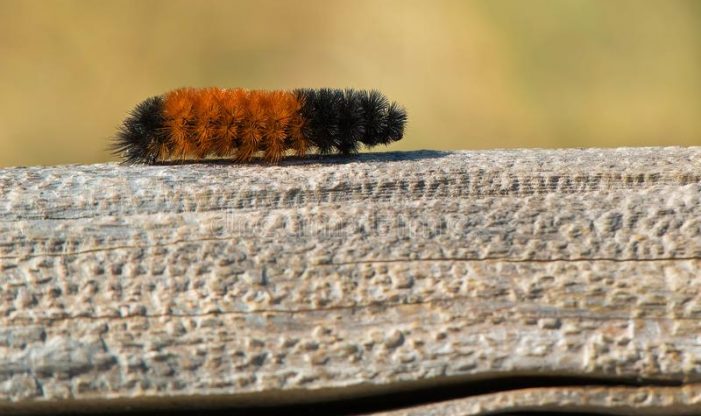Wisconsin winters cause most of us to bundle up and spend more time indoors. But insects survive the deep chill with an array of amazing strategies. Many aquatic insects overwinter as larvae or nymphs under the ice, feeding and growing until spring comes and they are ready to emerge. Some insects migrate to new areas. Most insects on land look for protected microclimates to stay warm and dry by seeking refuge underground, under rocks and logs, or below leaf litter. One of the most fascinating strategies insects have to survive the winter, however, is diapause.
Diapause
Diapause, a period of suspended development, is a lot like hibernation. Environmental cues, such as shortening days, plants dying back, and cooler temperatures trigger metabolic changes and diapause begins. Depending on the insect, they may pause as eggs, larvae, pupae, or adults. Here are examples of insects pausing at each stage.
Diapause as Eggs – Northern Walkingsticks
Northern walkingsticks drop eggs from the forest canopy and let them fall to the leaf litter below. Instead of being easy prey for creatures, the eggs are protected, in part by their design. Each egg has an edible part attached to the end, called a capitulum, which attracts ants to haul the eggs back to their nest where they consume only this edible part. They then place the eggs into their waste pile, which is a great environment for walking sticks to wait out the winter. Walkingstick nymphs emerge in May, unscathed by their ant hosts.
Diapause as Larvae – Woolly Bear Caterpillars
These familiar fuzzy black and rust banded caterpillars are the larvae of the Isabella tiger moth. Larvae grow in distinct stages, or instars. When woolly bears are in their final instar, and experience signs of seasonal change, they begin producing “antifreeze” in the form of glycerol. This cryoprotectant enables them to freeze and thaw again without harming internal organs. They can withstand temperatures as low as -17 degrees Fahrenheit. People often spot them in the late fall, searching for sheltering vegetation to spend the winter months ahead. These larvae will occasionally walk around on mild winter days and return to dormancy when temperatures drop again. They pupate in late spring.
Diapause as Pupae – Cecropia Moths
In the fall, cecropia larvae construct an intricate silk scaffold that will anchor cocoons to tree branches near food sites. Caterpillars then fabricate protective multilayered cocoons that possess outer and inner envelopes, two discrete waterproof layers separated by a space with silk. Soon after the larva builds this winter home around itself, it pupates in the center, where it will diapause as a pupa until spring.
Diapause as Adults – Mourning Cloak Butterflies
Most butterflies diapause as eggs or pupae, but mourning cloak butterflies spend the winter in cryo-preservation as adults. They shelter in cavities, beneath tree bark, or anywhere they can fit, to protect themselves from winter winds and to be hidden from predators. Mourning cloaks can emerge as early as February to feed on the sap running in trees. Before emerging, mourning cloaks raise their body temperature up to 15 degrees warmer than the surrounding air through isometric shivering. This enables mourning cloak butterflies to emerge while the air temperature is still too cold for most other butterflies.
The next time you take a walk in the winter landscape, consider the incredible adaptations of insects, the little things that run the world.


